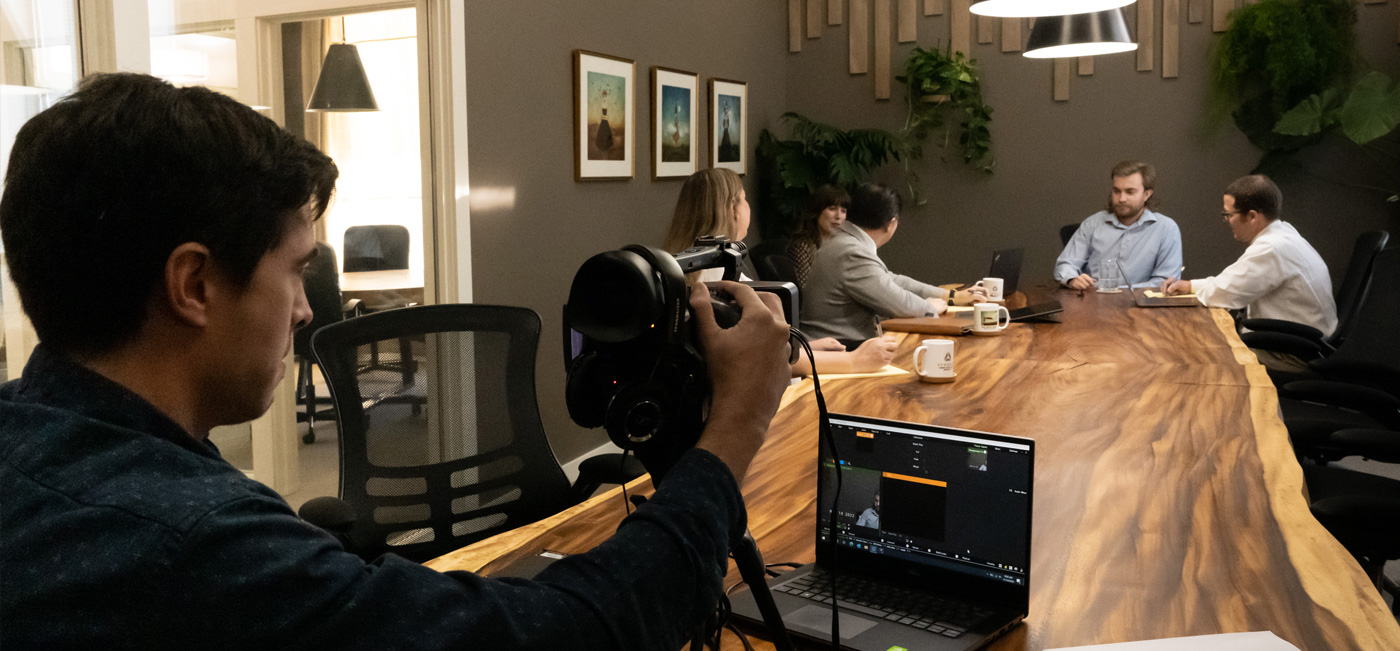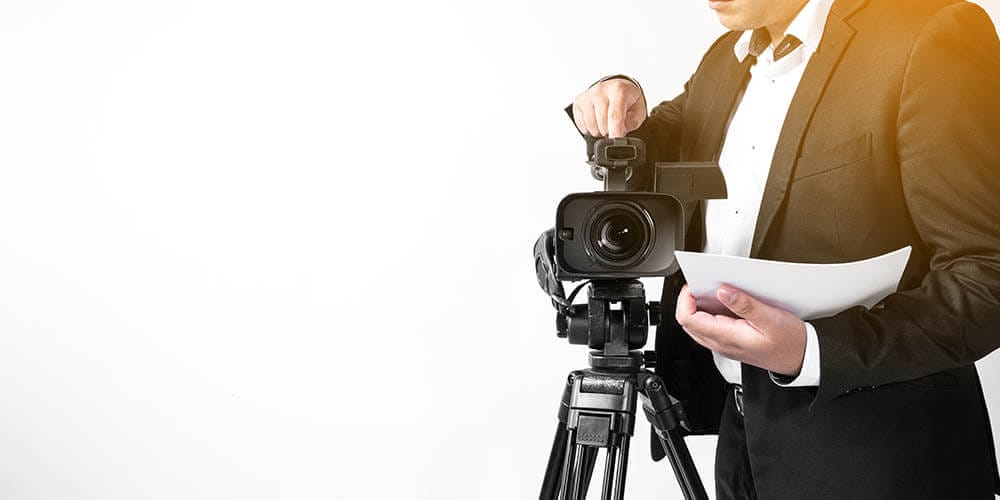Legal Videography: Changing the Way Evidence is Recorded and Presented
Legal Videography: Changing the Way Evidence is Recorded and Presented
Blog Article
Delving Into the Systems of Lawful Videography: Introduction Its Procedure in Shielding Authentic Aesthetic Testimony for Judicial Procedures
In the realm of judicial procedures, the function of legal videography stands as a keystone in preserving and providing visual evidence. As modern technology continues to advancement, the systems behind legal videography have actually come to be significantly intricate, offering an essential layer of authenticity to statements captured on video clip. By diving into the operational complexities of lawful videography, one can discover the meticulous procedures that guard the integrity of visual evidence presented in courts - Legal Videography. This exploration not just clarifies the historic development of legal videography yet likewise means the future patterns that may even more revolutionize just how visual testimonies are promoted in the realm of justice.
Historic Evolution of Lawful Videography
Examining the historical development of lawful videography reveals a substantial makeover in the capturing and discussion of visual evidence within the legal landscape. In the past, lawful procedures greatly counted on composed records and pictures to document occasions and supply evidence. With the development of video clip innovation, the legal sector witnessed a standard change in exactly how aesthetic statement was caught and provided.
The evolution of lawful videography can be mapped back to the late 20th century when advancements in video recording equipment made it more easily accessible for usage in court rooms. This technical development not just enhanced the accuracy and reliability of aesthetic evidence but also transformed the method situations were offered to juries and courts (Legal Videography). Lawyers started to acknowledge the convincing power of video clip recordings in conveying emotions, nuances, and non-verbal cues that written transcripts or photographs alone can not capture efficiently

Technology Innovations in Video Documentation
What essential technological innovations have revolutionized video clip paperwork in the legal area? The lawful field has seen substantial developments in video clip documentation modern technology that have actually enhanced the authenticity and integrity of visual evidence in judicial proceedings.
In addition, developments in video clip encryption and watermarking modern technologies have strengthened the safety and tamper-proof nature of video evidence, safeguarding it versus unapproved alterations or tampering. Additionally, the introduction of cloud storage space services and remote gain access to capacities has streamlined the storage, access, and sharing of video clip evidence, facilitating seamless partnership amongst legal specialists and guaranteeing reliable accessibility to vital aesthetic testimonies when needed. These technological advancements in video documentation have definitely changed the lawful field, boosting the precision, reliability, and admissibility of visual evidence in judicial process.
Function of Lawful Videographers in Courtroom Settings
The development of video documents modern technology in the lawful area has necessitated a critical role for lawful videographers in court settings, making certain the honesty and dependability of visual testaments provided during judicial process. Lawful videographers play a fundamental function in recording and preserving exact visual proof that can be essential in court instances. Their duty prolongs to establishing tools, taping proceedings, and producing high-quality video clips that accurately show the occasions in the court.
In courtroom setups, legal videographers need to comply with stringent standards and standards to keep the authenticity of the visual record. They should possess an eager eye for information and a detailed understanding of legal treatments to guarantee that the video footage they catch is a real depiction of the events that took place. Additionally, lawful videographers special info often work closely with legal groups to ensure that the video evidence lines up with the instance's requirements and can be successfully offered in court to support the lawful arguments being made. Generally, the duty of lawful videographers in court settings is important in promoting the principles of justice and guaranteeing the transparency of lawful procedures.

Ensuring Admissibility and Stability of Video Evidence
To preserve the reputation of visual proof provided find this in lawful proceedings, making sure the admissibility and honesty of video proof is a crucial obligation for lawful videographers. Admissibility describes the acceptance of evidence by the court, and for video proof to be permissible, it must satisfy certain requirements. Lawful videographers play a crucial role in making sure that the videos they capture abide by the policies of proof, such as dependability, significance, and credibility.
Honesty of video clip proof involves maintaining the creativity and precision of the video from the time it is recorded until it exists in court. This consists of securely keeping the video clip files, documenting the chain of custodianship, and preventing any meddling or changes. Lawful videographers must stick to strict protocols to assure the honesty of the video clip proof and stop any type of difficulties to its authenticity.
Future Trends in Legal Videography
Offered the increasing dependence on modern technology in legal proceedings, lawful videographers are positioned to welcome ingenious developments forming the future of aesthetic testament capture and discussion. Among the prominent patterns coming up is the assimilation of online reality (VIRTUAL REALITY) and boosted fact (AR) modern description technologies into lawful videography. These innovations have the possible to change exactly how visual proof is provided in court rooms, permitting courts and judges to submerse themselves in the scene of the criminal activity or case.
Furthermore, the usage of expert system (AI) algorithms for video evaluation is expected to enhance the process of assessing and assessing big quantities of video footage. AI can help in recognizing crucial minutes, anomalies, and patterns within video clips, enhancing the effectiveness of legal examinations.

Conclusion
Finally, legal videography has actually played a critical role in providing genuine aesthetic evidence for judicial process. Via technical advancements and the expertise of lawful videographers, the integrity and admissibility of video proof are made certain in court setups. As legal videography continues to evolve, it will be important to maintain criteria that maintain the accuracy and integrity of visual statement for the future of lawful proceedings.
Taking a look at the historical progression of lawful videography reveals a considerable improvement in the capturing and discussion of aesthetic evidence within the legal landscape.The development of video clip documentation modern technology in the lawful field has required an important role for legal videographers in court setups, making certain the integrity and reliability of visual statements offered throughout judicial procedures. In addition, lawful videographers typically function carefully with legal groups to make sure that the video clip proof straightens with the instance's requirements and can be efficiently offered in court to support the legal disagreements being made.To preserve the reputation of visual evidence offered in legal process, making sure the admissibility and honesty of video evidence is a vital obligation for legal videographers. As lawful videography proceeds to advance, it will be important to copyright criteria that keep the precision and integrity of aesthetic statement for the future of legal proceedings.
Report this page